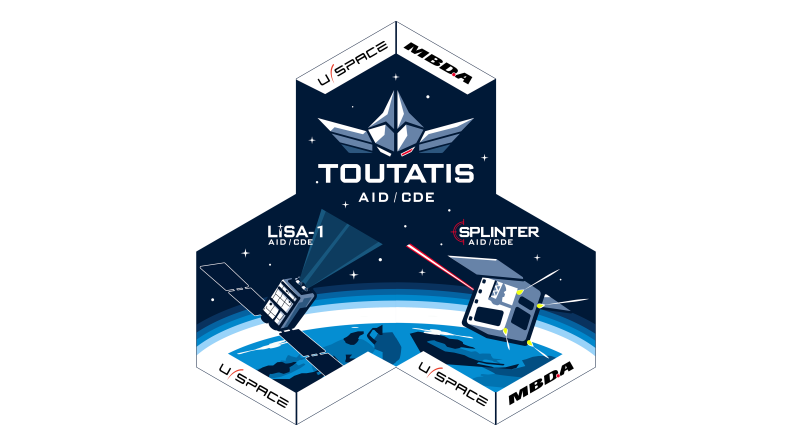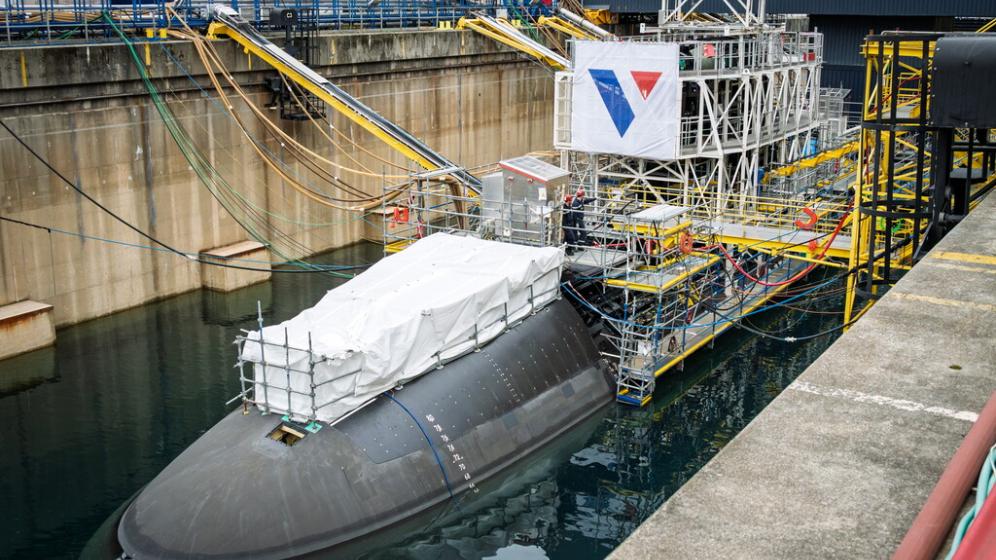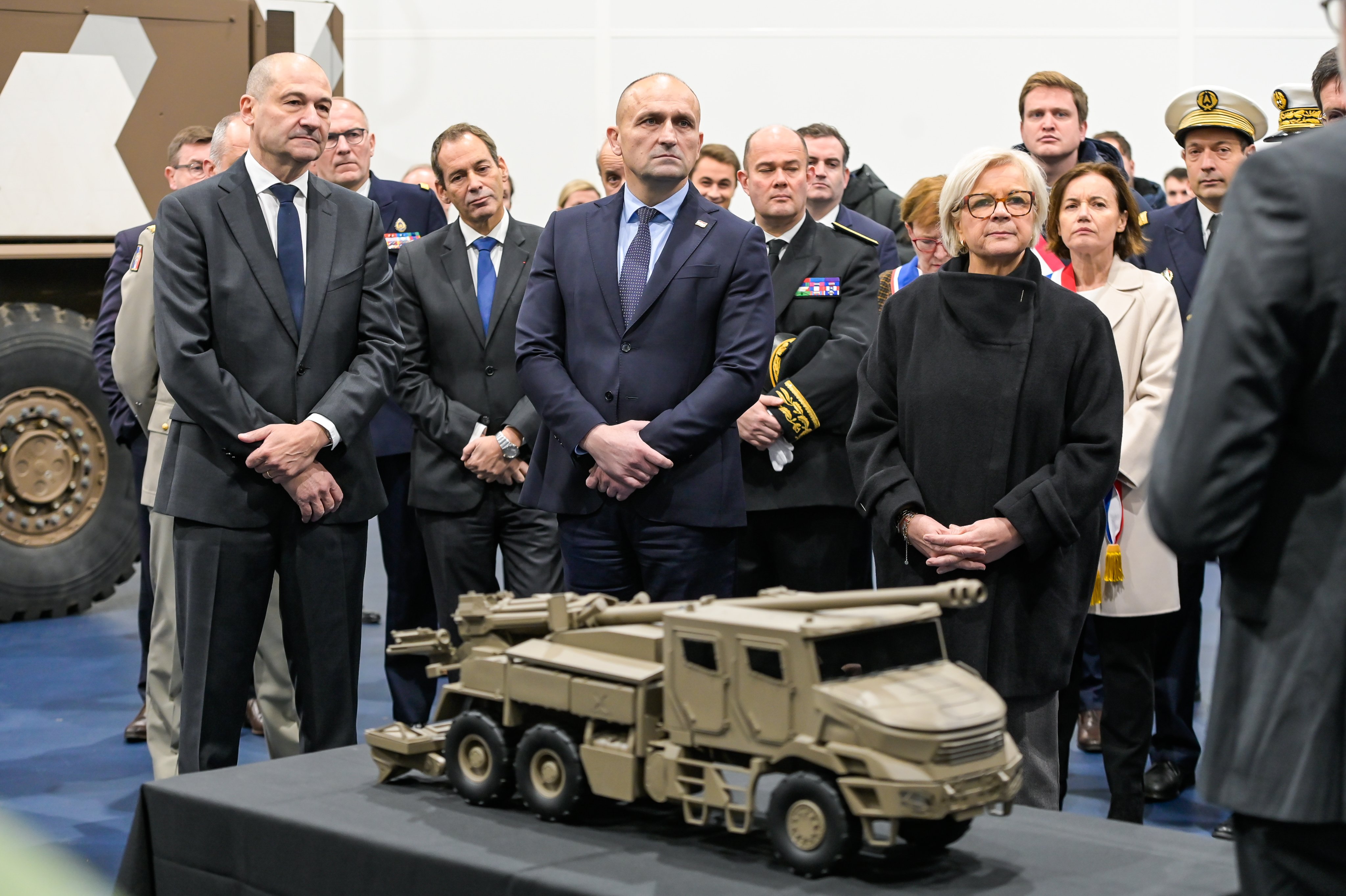The management of munitions stocks and flows is essential to prevent military manoeuvres from slowing or stalling. This article explains the workings of the Joint Munitions Service (Service interarmées des munitions—SIMu), which maintains French munitions stockpiles, and offers an insight to the complexity of its operations and how stocks are maintained.
Are We Out of Ammunition? Or How the Munitions Banker Manages the Resources of the Forces
It is said that money is the sinews of war, yet munitions are essential for waging or winning it. The importance of possessing weapons and ammunition appropriate to the nature and environment of conflicts is constantly being reaffirmed. Firearms allowed European colonisers to win against Amerindian peoples armed with bows and arrows, the guns of German Panzers contributed to the success of Blitzkrieg during the Second World War and guided weapons contributed to victories in the Balkans and the Middle East with greater accuracy than ballistic ones—sufficient illustration of the progress made in the pairing of weapons and munitions. Though the performance of munitions might allow technical superiority over the adversary, their quantity is also a factor of success.
Combat units can only carry out their missions if they have sufficient stocks. Long-term conflicts exacerbate this problem: that was the case in 1941 when Churchill sought the support of the American Congress and more recently in the Russia-Ukraine conflict, when the Ukrainian President Zelensky launched appeals to his NATO and European partners. As the latter are currently ceding a part of their own resources there are discreet, though anxious murmurs everywhere questioning stock levels of munitions in France. These are legitimate concerns since they reveal uncertainty about the future—relief in seeing a conflict rapidly calming down or the possibility of being swallowed up in crises that put all long-term projects on hold? Of the belligerents, which will be the first to have his combat capability reduced if his stockpile were to run dry? Will France preserve its freedom of action with a sufficient stockpile of munitions to remain credible in an unstable world?
To answer these questions we need to understand for which purposes our stocks of munitions are constituted and how they are managed. For this, the Joint ammunition service (Service interarmées des munitions—SIMu) is the top-level operator. It acts as banker and asset manager for conventional munitions, administering a network of depots and dumps across French territory and abroad, and contributing to operational manœuvres by delivering the resources the armed forces have banked with it at the right place, at the right time, at the right quality and in the right quantity.
The SIMu, a Trusted Bank
Rather like a banking network, the fourteen depots of the SIMu in mainland France and Corsica, plus five sites in French overseas territories and foreign countries (Outre-mer et à l’étranger—OME), offer a network of vaults appropriate to the stockpiling of munitions in optimal conditions of security taking into account their intrinsic risks, in areas enjoying defence protection, with respect for the environment and working conditions.
Activities in these depots are very strictly controlled.(1) Items containing active material are protected from the principal risk, which is fire, and from malevolent acts, through application of the principle of defence in depth. Physical barriers allow management of risk—pyrotechnic material is sealed within the munitions which are themselves encased in special packaging and stored in reinforced infrastructure within controlled areas. Each of these barriers conforms to the most stringent standards in force.
For protection against malevolent acts, each SIMu depot is situated in a protected area (Zone protégée—ZP), monitored by human and material means. These activities at risk are codified in French employment law (the Code du travail), from which are drawn studies on safety at work (Études de sécurité du travail—EST), commonly known as pyrotechnic studies. These enable appropriate procedures to be devised to cater for the potential risks related to the active material contained in munitions, in order to protect personnel operating in areas that would be affected in case of explosion of munitions. In addition to this consideration of risks within the pyrotechnic enclosure, the potential risks are analysed in order to protect the external environment by means of danger studies (Études de danger—EDD) which allow sites to be operated in accordance with the environmental code.
This exhaustive consideration of risks inherent to munitions, conducted strictly in accordance with the legislation, leads to a high level of confidence in the munitions banker, who is at the centre of the munitions supply chain. The SIMu is therefore an essential player in munitions support. Note, though, that SIMu deals neither with acquisition of new resources in the upstream phase nor their downstream distribution. In imitation of the central banks which issue banknotes, the armed forces deposit their munitions in the SIMu’s vaults after purchasing them using their own budgets. On demand, the SIMu prepares packages of munitions for shipping. These ‘funds’ are then transported by the units which will ‘spend’ them or by organisations which will transport them as close as possible to their end users. So, in contrast to other pillars of the support services, the SIMu is not an end-to-end player, despite the popularly-held belief.
The SIMu is at the centre of the supply chain: it receives and stores munitions for the forces. The stockpile held is constituted on the basis of operational contracts agreed with the armed forces, which are themselves derived from political decisions arising from strategic reviews, plus training allocations. The SIMu is a rigorous retail bank: it supplies the munitions ordered by the forces at any time, anywhere, in quality and quantity. The service delivers resources to over 480 client units(2), of which more than a sixth are in the OME. Such diversity and number of clients calls for a particular manner of operation.
The service headquarters directorate in Versailles (DSIMu) maintains an attentive back-office(3) role, but downward delegation is the principle of everyday operation. The directors of the five main munitions establishments (Établissements principaux de munitions—EPMu) on the mainland,(4) the liaison officers (Détachés de liaison—DL) in the OME depots and the Explosives Safety Officers—ESO (in French, Adjoints interarmées du soutien munitions—AISM) on operations and exercises, have delegated responsibilities for the depots and dumps in their respective geographical areas.
The current network of SIMu depots is the result of the merger of each armed force’s individual network on creation of the service in 2011. It still has a degree of separation by colour of uniform by virtue of the particular needs of certain clients: for example, the air bases of Cazaux and Solenzara have dumps which support air-launched firing campaigns. Above all the overall storage capacities have to be optimised, which could mean that aeronautical munitions, for example, might have to be stored in sites that would never know the sound of a jet engine.
With its aim of maintaining resilience and capability to supply resources to the right level of need within its network, as a wise banker of course the SIMu does not put all its precious eggs in one basket.
It is in this way that the SIMu fulfils its tasks of reception, storage and availability of munitions for the forces(5) in optimal conditions of conservation, both for preserving them from external risks and for keeping control over their inherent risks. In addition to these storage services the specialist munitions banker proposes an asset management service for optimisation of the forces’ stocks.
Quality Asset Management
Munitions stored by the SIMu are permanently monitored in order to maintain accurate knowledge of stockpile levels as well as guaranteeing the intrinsic levels of safety and performance of munitions. Supply chain experts have instant access to stockpile levels via the munitions digital data base: they organise stocks as a function of the rate of consumption and operational needs, ensure the best possible reactivity to serve the forces and are able to alert the armed services when stocks are approaching critical levels.
Continual improvement in munitions-related services relies in particular on evaluation of the quality of service rendered (Qualité du service rendu—QSR). On the other hand, the SIMu does not offer a credit service. Each item of munition that enters storage is allocated to the armed force that purchased it. Transfers between forces can occasionally be arranged but the munitions bank does not give advances on consumption!
There is constant iterative work between the SIMu and the operations support and transportation centre (Centre du soutien des opérations et des acheminements—CSOA, attached to the central defence staff) regarding the transport of munitions between the principal depots (equivalent of the central banks) and the local depots or dumps (equivalent of retail banks), both on the French mainland (inter-depot flow) and between French territory and OME or external operations (referred to as shipping). This comes down to the SIMu preparing the munitions for transport as a banker prepares bundles of notes, to be taken on charge by the security company—in this case, the CSOA, or more precisely, the units designated by the CSOA.(6)
In addition, whilst the SIMu is committed to delivering the quantities of munitions ordered by the users, provided it holds them, it also guarantees their quality. Munitions are regularly monitored by a system of sampling within batches for non-complex ammunition, and individually for complex items(7) —those used by the Air and Space Force in particular.
The SIMu therefore guarantees the good management of the assets entrusted to it by the forces. To achieve this it follows resource levels permanently, spreads them in the most balanced manner for guaranteeing the reactivity of forces, overall resilience and the maintenance activities that contribute to supplying munitions ready for use. Management of the stockpile and organisation of the appropriate supply streams is a matter of the day-to-day commitment ensured within the SIMu’s long-term vision.
A Manager of Stocks and Flows
Whereas optimisation of munitions storage is a matter of compromise between many factors brought about by the criteria associated with the particular resource, stock levels reduce daily as a result of user consumption, transfers to third parties and eliminations and recover as a function of resupply streams.
The nature of munitions leads to multiple storage constraints which have to be taken into account in both stock management and stock flow. Munitions come in many shapes and sizes: some can be easily slipped into a pocket whilst others would not even fit into a garage for a car—aeronautical missiles in particular. This problem of dimensions drives consideration of horizontal shelving and vertical stacking of munitions within depots. Added to these dimensional constraints are restrictions concerning pyrotechnic risks. The classification of danger (Division de danger—DD) of each munition item, which relates to its explosiveness, defines the strictness of the storage measures to be taken. Each of the munition banks of the SIMu network must therefore adapt as best it can to these constraints whilst preserving the best capability to conduct maintenance operations and ensuring supply streams in line with the planned needs of the forces and operational complexities, including those relating to potential high-intensity conflicts.
On this subject, forecasting the rate of consumption of resources is the most important factor in avoiding breaks in supply upstream of the supply chain. Although training allocations are defined annually (albeit with slight revisions), it is far more complex to anticipate operational consumption and transfers to strategic partners as a result of changes in the international geopolitical situation. A number of black swans(8) appeared in 2022, in Eastern Europe and in Sub-Saharan Africa. Like banks who prepare for sudden, unexpected shocks, stock market crashes in particular, the forces, too, hold themselves ready to bounce back from internal shocks.
Moreover, whilst consumption of munitions is the main source of stockpile reduction, some munitions are eliminated when they reach their ‘use by’ date or suffer ageing problems such as exudation, obsolescence or unsuitability because of withdrawal from service of the system that fired them. They are then eliminated under state control by explosives disposal experts of the SIMu or by outside contractors who provide arrangements to guarantee that each item is rendered unfit for purpose. In the same way that the Bank of France withdraws and destroys worn-out banknotes, the SIMu ensures the disposal of munitions that might still be capable of being used.
Acquisition of munitions is a long-term process, especially for air-launched missiles, because of the contractual aspects in tight or closed markets and production and delivery times. The current crises which have generated problems in resupply of raw materials and in transport are also affecting munitions, and can lead to delayed restocking and initial outfitting. It is a matter of national sovereignty. This upstream phase of the supply chain is fundamental to building up the stockpile, since the bank can only be full if the clients fill it!
The stockpile must therefore be analysed from two aspects: on one hand the dynamic management of flows, and on the other, maintaining a balance around thresholds defined by the contracts agreed with the forces. While technical expertise contributes to maintaining optimal stock levels of munitions, politico-strategic decisions determine their actual levels.
* * *
In conclusion, the munitions stockpile of the French armed forces is constituted in the depots of the SIMu, which ensures their preservation, maintenance and destruction where needed, under the best conditions. The service is wholly dedicated to the task of munitions support and sits at the centre of the appropriate supply chain, acting as a central banker and responsible for a network of retail banks which serve the needs of armed forces’ units.
Additionally, it works as a wise asset manager, scrutinising stock levels and spreading resources according to the best compromise between use, resilience, maintenance in operational condition (Maintien en condition opérationnelle—MCO) and storage capacity. On the latter point, it makes great effort to have available the necessary and sufficient storage space for munitions. Should the bank become empty it would then act for the forces, and the political decision-makers in particular, by financing resupplies at sufficient levels to regenerate supply streams to rebuild stocks. While there is flow, there is stock. As with the banking services, it is a matter of accounting! ♦
(1) SIMu depots on the mainland are classified Seveso - upper tier. The EU directive aimed at preventing major accidents involving dangerous substances is called Seveso, in echo of the the accidental release of dioxin in 1976 in the eponymous Italian commune.
(2) 60% Navy, 25% Army, 15% Air and Space Force. The headquarters and services are attached to the forces’ depots.
(3) The central administrative level of a bank which maintains an overall surveillance capability but has no direct contact with clients.
(4) Brittany, Centre-Aquitaine, Champagne-Lorraine, Mediterranean and Provence.
(5) Arrêté of 30 December 2020 defining the task and organisation of the joint munitions service (https://www.legifrance.gouv.fr/).
(6) The CSOA calls upon either outside service providers or assets within the forces—in particular via the transport and surface transit centre (Centre des transports et transits de surface—CTTS), over which it has authority.
(7) Complex munitions are those which require specialised assembly or maintenance, notably missiles. Other munitions, such as ammunition cartridges are by default non-complex.
(8) See The Black Swan: The Impact of the Highly Improbable, Nassim Nicholas Taleb, Random House, 2007, 366 pages.







